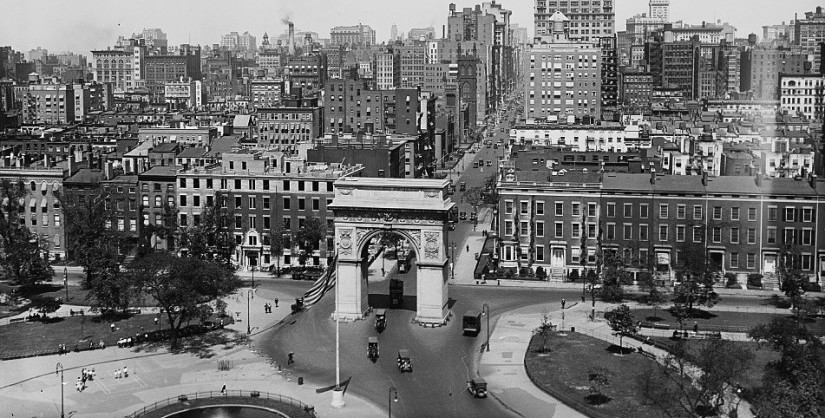
Pierce Trowbridge Wetter
Pierce Trowbridge Wetter was involved in the fight against Robert Moses’s Washington Square Park Plan and the efforts to save Castle Clinton from demolition.
Pierce Trowbridge Wetter, a consulting engineer and the former treasurer of the Greenwich Village Historical Society, lived at 24 Washington Square North for a large part of his life. He is known best for his participation in the fight against Robert Moses’s 1939 Plan for Washington Square Park and also for the lawsuit he brought against Robert Moses in the fall of 1941 to stop the demolition of Castle Clinton.1 Wetter was both a Quaker and a pacifist, and spent five years in jail for his opposition to World War I. (He was pardoned by President Roosevelt in 1933). Despite his stance against fighting, Wetter was passionate about preservation and fought relentlessly against Robert Moses.2
Pierce Trowbridge Wetter passed away on May 10, 1963. He was 68 years old.
Greenwich Village Historical Society
Treasurer
Volunteer Committee for the Improvement of Washington Square
Chair
As the Chair of the Volunteer Committee for the Improvement of Washington Square, Wetter fought alongside the Municipal Art Society, the Fine Arts Federation, The New York Chapter of the American Institute of Architects, New York Society of Landscape Architects, City Club, and the Citizens Union to save Washington Square from the Moses Plan.3 Strongly disagreeing with the plan in its entirety, but particularly with the proposed encircling double roadway, Wetter worked to collect signatures against the Moses Plan. Wetter also, with the help of Robert C. Weinberg, a local architect, created an alternative plan for the park providing one way traffic lanes around the park and a pedestrian crossing on Washington Square East, near New York University.4 Here their fight was a success as Moses’s plan was overturned by the Board of Estimate in 1958.5
In 1941, Robert Moses announced the proposed demolition of Castle Clinton to build the Brooklyn Battery Bridge.6 Following this announcement, Pierce Trowbridge Wetter brought a lawsuit against Moses and began one of history's major preservation battles. With the help of Henry H. Curran - former magistrate, deputy mayor, and borough president - and Weinberg, Wetter was able buy time. In this time, America entered World War II, and the manpower and equipment necessary for demolition of the thick historic walls became unavailable.7 The battle continued on for some time but the public outcry was only enough to save part of the building. Moses succeeded in demolishing the aquarium structure, designed in the 1890s by McKim, Mead & White. The remainder of the historic fort was designated a national landmark in 1946 under the administration of the National Park Service of the Department of the Interior.8
- Anthony C. Wood, Preserving New York: Winning the Right to Protect a City’s Landmarks (New York: Routledge, 2008), page 59.
- Ibid, page 171.
- Ibid, page 171.
- Emily Kies Folpe, It Happened On Washington Square (Baltimore: Johns Hopkins University Press, 2002).
- Anthony C. Wood, Preserving New York: Winning the Right to Protect a City’s Landmarks (New York: Routledge, 2008).
- Ibid.
- Ibid.
- Gerard Wolfe, New York: 15 Walking Tours (New York: McGraw Hill, 2003).